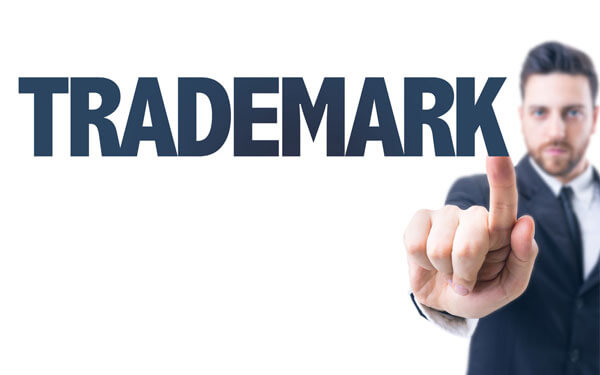This article is written by Kanika Goel. It gives a detailed analysis of the provision under Section 29 of the Trade Marks Act, 1999 dealing with the infringement of a registered trademark. Along with the comprehensive explanation of the provision, the article also deals with the various types of trademark infringement, defences available against the infringement and exceptions to it. Further, it provides a brief account of the penalties and remedies available against trademark infringement, which is supplemented by various important case laws.
Table of Contents
Introduction
Intellectual property is something which we encounter on a regular basis in our lives. From the bed linens’ designs to the trademarks on various products of the household, from our home furniture to the books we read, intellectual property becomes a part of it. Specifically, intellectual property is a part of almost every single aspect of human life, which involves skills, knowledge, labour, capital, etc. It reflects human intellect and creation. Intellectual properties or IPs are usually classified into two broad categories, namely the “copyrights” and the “industrial properties”.
Trademark is one such type of intellectual property which comes under the head of industrial property. Trademarks are covered under the Trade Marks Act, 1999 (hereinafter referred to as the “Act”) and reflect the signs, symbols, logos or labels which enable the buyers to identify the goods. They serve as an essential aspect of the IP law as they aim to protect the rights of a proprietor in whose name a mark is registered.
Trademarks are those distinguishing marks or signs or symbols which help the customers to make a difference between the goods and services associated with a particular mark. For example, the consumers of soft drinks can easily distinguish their choice of drink by choosing Coca-Cola as their preferred drink. Here, the consumers identify the soft drink from the trademark of Coca-Cola.
However, infringement of such trademarks tends to occur which leads to confusion amongst the consumers and unfair competition in the market. When a person uses a mark which is deceptively or confusingly similar to a registered trademark, he is said to infringe that trademark. This article aims to elaborate upon all the concepts and details which are necessary to be understood in order to analyse the concept of trademark infringement.
Meaning of a trademark
As defined under Section 2(1)(zb) of the Act, a trademark is a mark which is capable of being graphically represented in order to distinguish the goods and services associated with one person from another. These marks may include shapes, logos, colours, symbols, words and graphics, sounds, smells, etc. The validity of a trademark is 10 years but can be renewed indefinitely after paying the fee for the same. As mentioned earlier, trademarks in India are governed by the Trade Marks Act, 1999 in conformity with the principles of the Trade Related Aspects of Intellectual Property Rights (TRIPS) agreement and the Paris Convention, 1883.
According to the statutory definition of a trademark under Section 2(1)(zb), such a mark is also considered a registered trademark within the purview of Chapter XII of the Act (excluding Section 107) when it is used in relation to some goods or services to indicate a connection between the goods/services and the person in whose name such mark is registered.
Therefore, graphical representation and distinctiveness constitute the two main essentials of the definition of a trademark. For a mark to be registered trademark, it is essential for it to be represented graphically and must be capable of making a distinction between the associated goods and services with the other goods and services. Once a trademark is registered, the proprietor becomes the exclusive owner of that particular mark and enjoys the right to use it for his goods and services. In such a case, the proprietor gets the power to restrain any other person from using a deceptively similar mark.
Infringement of registered trademarks
A trademark is registered in accordance with the provisions mentioned under Chapter III of the Act. Registration of a trademark gives an exclusive right to the owner to use such a mark. However, there is always a chance of such marks getting infringed. When a person, not being the authorised user or the owner of a registered trademark, uses a mark which is either deceptively similar or identical to that registered trademark, it often creates confusion amongst consumers with respect to the goods and services associated with that trademark. Such an act of usage of such identical marks constitutes trademark infringement.

However, whenever a registered trademark is infringed, the exclusive owner or the proprietor of that trademark has the right to sue the infringer for the claim of damages and injunction in accordance with the provisions of the Act. Trademark law in India aims to protect the rights of the exclusive owner of a registered trademark and to ensure that exclusivity and the identity of a brand are maintained so that no harm is done to the reputation of the brand owners.
Deceptive similarity of trademarks
As mentioned under Section 2(1)(h), a deceptively similar mark is defined as “a mark shall be deemed deceptively similar to another mark if it so nearly resembles that other mark as to be likely to deceive or cause confusion.” In furtherance of this definition, a trademark is considered to be deceptively similar in comparison with the registered trademark when the degree of similarity between both the marks is so high that they appear identical to each other and causes confusion amongst the consumers with respect to the origin of the goods and services associated with the registered trademark. A holistic approach is to be adopted while checking the deceptive similarity between two marks, keeping in mind the degree of similarity and the likelihood of confusion it may create for the public.
Clause-wise explanation of Section 29
As per Section 29(1) of the Act, a registered trademark is considered to be infringed when a person not being the registered proprietor of that trademark uses it in contravention of the ways of permitted usage. Also, the use of a deceptively similar trademark or an identical mark which reflects similarity to the context of its rendered services is also considered trademark infringement.
Section 29(2) mentions the other ways in which a mark used by an unregistered proprietor may cause confusion with respect to the registered trademark and can cause infringement. These are as follows:
- When the identity of the mark used by the unauthorised person is similar or identical to that of the registered trademark or the services covered.
- Both, the identity of the registered trademark and that of the services covered by that trademark are deceptively similar to that of the mark used by any unauthorised person.
- There lies similarity in goods and services covered by the marks and the identity tends to cause confusion to the public at large.
Section 29(3) talks about the statutory presumption of confusion while stating that the court shall presume that the similarity of goods and services covered by two marks will cause confusion to the public at large if the trademark used falls under the category of clause (c) of Section 29(2).
Section 29(4) mentions the infringement of well-known trademarks or registered trademarks which have a stable reputation in India. According to this provision, a well-known trademark is considered infringed when there is a use of an identical trademark even though it covers different services. However, it is pertinent to note that in the cases of infringement of a well-known trademark, few things are to be looked upon which include taking unfair advantage of the well-known trademark and using a similar mark without any justified due cause.
This provision can be understood by the judgement delivered in the landmark precedent of N.R. Dongre vs. Whirlpool Corporation (1996), wherein the Supreme Court held that the respondents were holding a trans-border reputation of their trademark “WHIRLPOOL” which also extended to Indian territory and hence, the usage of the similar mark for the products manufactured by the plaintiff would constitute infringement with the intention of passing-off.
According to Section 29(5) of the Act, a trademark is said to be infringed when such a mark is used by another person as a trade name or the name of its enterprise. This provision restricts such users of unregistered marks. The provision clearly states that usage of a registered trademark as a trade name by another person with respect to the goods and services covered under the registered trademark would constitute infringement of such trademark.
Section 29(6) deals with the modes of unauthorised use of a registered trademark by a person not being the registered proprietor. The uses which constitute infringement of a registered trademark include the following:
- Attaching the registered trademark to his own goods and packaging;
- Importation and export of goods under the name of the registered trademark;
- Use of registered trademark to advertise the goods or to use them on business papers; or,
- Usage of a registered trademark for the sale of one’s goods or for offering services under the same registered trademark.
In accordance with the provision under Section 29(7), when a person not being the registered proprietor uses a registered trademark to label or package his own goods or to advertise his services not being duly authorised to do so, it is considered as an infringement of that registered trademark.

Further, as per the provision under Section 29(8), if a person not being the registered proprietor uses a trademark to advertise his goods or services and such advertising is done to take unfair advantage of that registered trademark, or lies in contravention to the honest commercial practices, or harms the character or the reputation of the registered trademark, it constitutes infringement.
Section 29(9) states that a registered trademark may also be infringed by the spoken usage or the visual representation of the words or which constitutes a distinctive element of that mark.
Types of trademark infringement
As mentioned earlier, Section 29 mentions infringement of a registered trademark. In simple words, whenever an unauthorised person uses a deceptively similar mark and creates confusion in relation to the associated goods and services, he is said to infringe that trademark. Majorly, infringement of a trademark is categorised into two types, direct and indirect infringement. Let us understand each of these in brief.
Direct infringement of a trademark
Direct infringement of a trademark is one where an unauthorised person uses a nearly similar or identical mark which leads to confusion regarding the choice of associated goods and services. Infringement of a trademark under Section 29 is considered direct infringement. The following essentials must be present to constitute direct trademark infringement:
Unauthorised person
A person who has no right to use the registered trademark or who is not the owner of the registered trademark.
Deceptive similarity
It is considered as a test to determine the similarity between two marks, one of which is a registered trademark. The mark which creates confusion in the minds of the consumers in relation to some goods and services for which there lies a registered trademark is said to be deceptively similar or identical.
Goods and services
It is important to note that the goods or services in relation to the mark which is not registered must also be similar to those goods and services associated with the registered trademark. Any sort of unauthorised use of a mark which is not registered in the name of the person using it constitutes the act of trademark infringement.
Registered trademark
When we talk about trademark infringement, it is crucial to understand that only a registered trademark can be an infringement. The concept of passing off applies in other cases.
Indirect infringement of a trademark
When there is an indirect infringement of a registered trademark, all the people who are considered direct infringers and those who aid and contribute to inducing the direct infringement of a trademark are held accountable. Indirect infringement is considered a principle of common law. In such cases, parties do not directly infringe the trademark but contribute to the infringement by either contributing to it or facilitating it. Indirect infringement is further categorised into two types:
Vicarious infringement
As present intrinsically under Section 114 of the Act, when a company commits an offence of trademark infringement, people who are responsible to the company are held liable for indirect infringement of a registered trademark. As the name suggests, vicarious liability usually arises in employer-employee relationships. The only proviso which saves a person from vicarious liability is when such a person acts in good faith and does not possess any knowledge of the infringement.
Contributory infringement
As the name suggests, when a person already knows that the act which has been committed may cause trademark infringement and still continues to contribute and aid in the commission of the particular act, he is said to infringe that trademark in a contributory manner. Hence, a person would be held liable for such type of infringement when the following essentials are fulfilled:
- Knowledge of infringement; and,
- Material contribution or aid to the direct infringer.
Exceptions to trademark infringement
Even though a trademark is infringed upon its unfair use in most cases, there lies some defences and some acts which do not constitute trademark infringement. Such acts are covered under the purview of Section 30 of the Act which expressly excludes certain acts which do not infringe a registered trademark. These acts include comparative advertising, fair use of the mark, descriptive and non-commercial use of the mark, usage of such trademark with prior permission or authorisation, etc. Let us understand them in detail.
Acts which do not constitute trademark infringement
As mentioned under Section 30(1), the following acts or uses of a registered trademark do not constitute its infringement:
Authorised use
When the person alleged to be infringing the trademark has already obtained the permission of the exclusive owner of the registered trademark to use the mark in accordance with the honest practices of the industries, it does not constitute trademark infringement.

Comparative advertisement
The term comparative advertising falls under the purview of Section 30(1), which states that if a person uses a mark in relation to advertising some goods and services which are competitive to those associated with the registered trademark, it does not constitute trademark infringement, provided that the mark is used in honest capacity and does not create confusion in the consumer market.
Non-detrimental to reputation
While using a mark which is similar to that of a registered trademark, it must be kept in mind that it should not be detrimental to the reputation of the registered trademark and should be distinctive in character so as to avoid causing any harm to the reputation of the registered trademark. Such acts do not constitute trademark infringement.
Non-commercial use of a mark
In some cases, even if the mark is identical or similar to that of a registered trademark, usage of it does not constitute trademark infringement. One such case is the use of such marks in academic and research areas. When a person uses a similar mark for non-commercial purposes, for example, in research, academics or making commentaries, it does not constitute trademark infringement because the use of such a mark remains devoid of the intention to deceive the consumers.
Doctrine of fair use
A trademark is not infringement even if it is used without the permission of the proprietor provided that the use of such mark must be fair and devoid of any intention to deceive the public. When a person alleged of infringing the trademark uses it for criticism or for writing reviews and news reporting, it does not constitute trademark infringement because it leads to the determination of honest opinion over a particular category of goods and services.
When a registered trademark is not infringed
In accordance with the provisions of Section 30(2), the following cases do not constitute an infringement of a registered trademark:
- When the plaintiff is devoid of any title to sue the defendant.
- In case of invalid registration of a trademark, the alleged infringer can take a defence of getting the registration expunged and use the trademark.
- When the alleged infringer uses a trademark to indicate the goods and services of some specific geographical origin.
- Using a trademark beyond the scope of conditions and limitations of its registration does not constitute trademark infringement.
- In all the cases where a person uses a trademark except for the cases mentioned under Section 29 of the Act, it does not constitute trademark infringement.
- When a trademark is used by a person not the exclusive owner but in due course of honest industrial practices without any aim to take unfair advantage of the trademark, it does not constitute infringement of that trademark.
- When a mark is used to indicate the kind, quality or intended purpose of the goods and services associated with the registered trademark, it does not constitute an act of infringement of that trademark.
Enforcement for trademark infringement
It is very crucial to know about the enforcement of legal actions against trademark infringement. Therefore, it becomes important to understand the incidental concepts related to the enforcement of legal actions when a trademark is infringed.
The plaintiff or the person who can sue
When there is an infringement of a trademark, the following persons can step into the shoes of a plaintiff and sue the person infringing the registered trademark:
- The proprietor in whose name the trademark is registered or his legal heirs/successors;
- In cases where the registered proprietor fails to take action against the infringer of the trademark, the registered user of that particular trademark can also sue the infringer by giving a prior notice to the registered proprietor;
- In case of the death of the registered proprietor, his legal heirs;
- If a trademark is registered in the joint name of two proprietors, any of them can sue the infringer;
- In order to protect one’s right to use the trademark, it is very essential for a person to get his trademark registered to hold ownership and exclusivity over that trademark and to possess the right to sue in case of its infringement.
- In cases of infringement of a trademark registered in India, a foreign proprietor can also sue.
Infringer or the person to be sued

When there is an infringement of a trademark, the following persons can be sued in the capacity of an infringer of that particular trademark:
- The infringer himself who by his own acts causes the trademark infringement or causes a threat to the reputation of the trademark by infringing the right of the plaintiff to use his registered trademark;
- When there is an indirect infringement of a trademark and the liability is found to be vicarious, the master in such cases is responsible for his employee’s or servant’s actions, which results in trademark infringement;
- The agents who use the mark on behalf of the defendant or the infringer can also be sued by the plaintiff;
- However, it is to be noted that in cases where the trademark infringement is caused by a company, the directors or the promoters cannot be held liable jointly unless there is proof of individual cause of action against them.
Jurisdiction for the suit of infringement
According to Section 134 of the Act, a suit for trademark infringement cannot be filed in any court inferior to the District Court having the jurisdiction to try the suit for the same. It includes the courts within the local limits of whose jurisdiction the plaintiff or the person who files a suit for trademark infringement:
- Actually and voluntarily resides himself; or,
- Works for gain; or,
- Carries or continues his business.
Limitation period for filing a suit of trademark infringement
As per the Schedule of the Limitation Act, 1963, a suit for infringement of a registered trademark is to be filed within 3 years of the date of trademark infringement. However, a suit is barred by limitation if filed beyond the prescribed period of limitation.
Remedies against trademark infringement
When the exclusive rights incidental to a registered trademark are violated without the permission or the authorisation of the registered proprietor or the owner of that trademark, it constitutes trademark infringement. In such cases of trademark infringement, the owner of the trademark or the registered proprietor can bring a suit against the infringement and pray for any of the following remedies available:
Civil remedies
A plaintiff can seek civil relief through his suit for trademark infringement by way of:
Injunctions
The competent court can grant discretionary relief to the plaintiff by way of injunctions in order to restrain the infringer from bringing an action against the plaintiff until the suit is disposed of. When the infringer is prohibited from carrying out the actions which have caused the trademark infringement, it is termed as interlocutory injunction. It restrains the defendant from further using the trademark. This is also known as a temporary injunction in accordance with Section 135 of the Act.
In order to completely restrain the infringer or the defendant from carrying on any act that would result in trademark infringement, the competent court can also pass an order of permanent injunction which is granted upon the final disposal of the suit.
In the case of Cadbury UK Ltd. vs. Lotte India Corporation Ltd. (2014), it was stated by the Delhi High Court that the case was an example of trademark infringement because the plaintiffs were successful in establishing their prima facie case showing that their trademark had been infringed after the defendants started using a similar mark in India and that the reputation of the goods of the plaintiff’s company was harmed. Therefore, the court granted a decree of interim injunction in favour of the plaintiffs.
Recently, in the case of Dr. Reddy’s Laboratories Ltd. vs. Rebanta Healthcare Pvt. Ltd. (2024), the Delhi High Court granted an interim injunction to the plaintiff as it was able to establish the prima facie case that its well-known trademark “Rebaheal” was illegally adopted and violated by the defendant showing that it was being used for different treatments. The court passed an order in favour of the plaintiff and stated that the marks used by the rival company were deceptively similar and identical not just visually but also phonetically.
Damages
The competent court can also grant relief to the plaintiff by way of compensation or damages which are to be awarded by the defendant to the plaintiff. These damages are not the actual amount of loss incurred by the plaintiff but only a notional amount of damages or compensation. While awarding damages to the plaintiff, the court usually takes into account, the following parameters:
- The extent of the actual loss suffered by the plaintiff due to direct infringing actions of the defendant;
- The injury caused to the reputation of the goods and services associated with the registered trademark of the plaintiff’s business;
- The court can even award damages in cases where there is no deception between the marks.

Account of profits
As per Section 135(1) of the Act, the court can either award damages to the plaintiff or the account of profits. These are the actual profits gained by the defendant by infringing the registered trademark of the plaintiff. The court can ask the defendant to transfer the actual profits earned by him in the course of trademark infringing activities.
Criminal remedies
Provisions under Chapter XII of the Act mention the penalties that can be imposed by the competent court upon the defendant or the infringer. Several provisions that are counted as criminal remedies against trademark infringement are mentioned below in a tabular form:
| Section | Nature of infringing act | Penalty |
| Section 103 | Contravention of a registered trademark by using false trade marks or falsely applying the mark to some goods and services or tampering with the origin of the goods associated with the registered trademark, etc. | Imprisonment for a period of not less than 6 months which may be extended up to 3 years.A fine of an amount not less than ₹50,000/- which may go up to 2 lakhs. |
| Section 104 | Selling goods associated with the registered trademark or letting them or hiring them or providing services to which false trademark description is applied. | Imprisonment for a period of not less than 6 months which may be extended up to 3 years.A fine of an amount not less than ₹50,000/- which may go up to 2 lakhs. |
| Section 105 | A subsequent conviction for the nature of the act mentioned under Sections 103 and 104 | Imprisonment for a period of not less than 1 year which may be extended up to 3 years.A fine of an amount not less than 1 lakh which may go up to 2 lakhs. |
Administrative remedies
Alongside the civil and criminal remedies, the following administrative remedies are also available to the plaintiff against the trademark infringement:
- Opposition to the similar mark is one such administrative remedy.
- Another remedy is the correction or rectification of the already registered trademark in order to eliminate the apparent chances of confusion.
- To put restrictions on the import and export of the goods associated with the mark used by the infringer to infringe the registered trademark.
Infringement and passing off
Meaning of passing off
A case of passing off arises when a person sells his own goods in the name of other goods associated with an unregistered trademark held by another person. In order to protect one’s goodwill of an unregistered trademark, the action of passing off is used.

As the phrase suggests, “passing off” enables the plaintiff to restrain the defendant from selling or passing off the goods which is done under the plaintiff’s trademark. Such action is usually available to every person possessing an exclusive trademark, though unregistered. However, certain characteristics or traits are to be observed when an action of passing off is taken. These are:
- The trademark of the plaintiff must be misinterpreted by the defendant in order to establish his own name for the goods associated.
- There must be a goodwill attached to the goods associated with the plaintiff’s trademark.
- In order to initiate an action for passing off, the plaintiff must establish that he has suffered loss because of the defendant’s misrepresentation.
- The misrepresentation caused by the defendant must be done with an ill-intent to cause confusion to the public in relation to the goods sold.

Difference between passing off and trademark infringement
- Where on one hand, a passing off action is a common law principle, a suit of infringement can only be instituted in a case where a registered trademark is infringed. There lies no question of registration of a trademark in order to bring an action of passing off.
- A suit of trademark infringement is filed on the basis of one’s statutory rights getting violated. However, in a passing off action, the common law right of the trademark owner is violated.
- The deceptive similarity between two marks one of which being a registered trademark can become a prima facie proof of trademark infringement. However, in order to establish an action of passing off, one must not only show the similarity between the goods sold by the defendant and those associated with the mark but also establish the fact that his action of showcasing his goods under somebody else’s trademark causes confusion to the public and deceives them.
| Trademark Infringement | Passing off |
| A suit for trademark infringement is a statutory remedy under the Trade Marks Act, 1999. | An action for passing off is a common law remedy wherein a plaintiff can sue the defendant in accordance with the provisions of Section 20 of the Code of Civil Procedure, 1908. |
| Deceptive similarity becomes the prima facie proof of trademark infringement. | In order to bring an action for passing off, a plaintiff must establish the defendant’s act of using an identical trademark, which harms the reputation of the plaintiff’s brand and causes confusion amongst the public. |
| In order to bring a suit for trademark infringement, it is necessary to get the trademark registered. | There is no need to register one’s trademark in order to bring an action for passing off. |
| It is not necessary that an injury or damage is caused to the plaintiff’s goods or his trademark. | In order to bring an action for passing off, it is essential to establish that the goodwill or the reputation of the plaintiff’s goods and trademark is damaged or injured by the defendant. |
| An infringement suit can be filed by the plaintiff even in the absence of the use of a similar mark by the defendant. | For an action of passing off, the use of goods and injury to the goodwill of the plaintiff’s business is essential. |
Important case laws
Parle Products Pvt. Ltd. vs. J.P. and Co. (1972)
Facts
In this case, the plaintiffs being the owner of the registered trademark “Gluco” filed a suit for trademark infringement against the defendants for using a deceptively similar mark and pattern of the wrapper as used by the plaintiffs.
As contended by the plaintiffs, this had caused confusion in the market regarding the authenticity of the “Parle” goods and diluted the exclusive character of his trademark. Even though the defendants opposed it and contended that there was a sufficient differentiating factor between the marks and the wrappers used, the matter went to the Apex Court as a suit for trademark infringement.
Held
The Supreme Court, while giving the verdict, stated that the trademark used by the plaintiffs with the words “Gluco Biscuits” on the wrapper and the one used by the defendants as “Glucose Biscuit” created confusion amongst the public at large in relation to the prominent place of the former brand in the market.
The court emphasised the importance of protecting one’s registered trademark against the deceptively similar mark. In this landmark judgement, the court held that the mark on the wrapper used by the defendants was deceptively similar to that of the registered mark of the plaintiffs.
Cadila Healthcare Ltd. vs. Cadila Pharmaceuticals Ltd. (2001)
Facts
The appellant in this case, namely “Cadila Healthcare Ltd.” is a pharmaceutical company which was responsible for the introduction of a medicinal drug named “Falcigo” for the treatment of cerebral malaria commonly identified as “Falcipharum” and got that trademark registered in 1996.
As per the contentions of the appellant, the respondent in this case started importing a drug for the treatment of the same disease under the trademark “Falcitab” in 1997. This, according to the appellant, created confusion in the market as it was deceptively similar to its registered trademark. The appellant in this case filed the suit for injunction against the respondent in the Vadodara District Court, Gujarat, but the verdict was pronounced in the favour of the respondent, stating that the formulation of both medicines was different.
Resultantly, an appeal was preferred before the High Court, but the High Court also dismissed the appeal stating that there was no scope for confusion with regard to the medicines and their formulation. Aggrieved by this, the appellant went before the Supreme Court and preferred an appeal.

Held
The Apex Court in this case, did not get into the details of the previous judgement given by the lower court and the High Court and stated that despite belonging to the same category of drugs in the “Schedule L”, it had high scope of creating a confusion in the minds of the public and hence became a matter of deceptive similarity. Ruling in favour of the appellant, the court stated that the present case was a case of passing off, which also caused damage to the goodwill of the appellant’s reputation.
Conclusion
From this article, it can be analysed that trademark infringement may not just cause an injury to the reputation of the registered proprietor but it also poses a threat to the integrity and exclusivity of the brand associated with the trademark of the owner. Section 29 of the Act gives a detailed description of the ways in which a trademark may be infringed.
In order to protect and maintain healthy market practices, protection of one’s registered trademark becomes extremely crucial. A suit for trademark infringement not only protects the registered proprietor’s rights but also helps him to ensure that the defendant does not mislead the public by causing confusion with respect to the mark used to deceive people regarding the goods and services associated with the registered trademark.
Frequently Asked Questions (FAQs)
What traits must be established by a petitioner to showcase that his trademark has been infringed?
In order to bring a suit for trademark infringement, a petitioner must establish the following elements:
- Use of the registered trademark by a person who has no right to use the registered trademark or who is not the owner of the registered trademark.
- Deceptive similarity is considered as a test to determine the similarity between two marks, one of which is a registered trademark. The mark that creates confusion in the minds of the consumers in relation to some goods and services for which there lies a registered trademark is said to be deceptively similar or identical in nature.
- It is important to note that the goods or services in relation to the mark which is not registered must also be similar to those goods and services associated with the registered trademark.
- In order to sue the defendant for trademark infringement, it is crucial to get one’s trademark registered. When we talk about trademark infringement, it is crucial to understand that only a registered trademark can be infringed.
What is meant by deceptive similarity?
As mentioned under Section 2(1)(h), a deceptively similar mark is defined as “a mark shall be deemed deceptively similar to another mark if it so nearly resembles that other mark as to be likely to deceive or cause confusion.” In furtherance of this definition, a trademark is considered to be deceptively similar to a registered trademark, when the degree of similarity between both the marks is such that they either seem identical to each other or cause confusion amongst the consumers regarding the origin of the associated goods and services.
What does not constitute trademark infringement?
As mentioned under Section 30(1), the following acts or uses of a registered trademark do not constitute its infringement:
- Authorised use of the registered trademark.
- Comparative advertisement with the registered trademark does not constitute trademark infringement, provided that the mark is used in an honest capacity and does not create confusion in the consumer market.
- While using a mark, it must be kept in mind that it should not be detrimental to the reputation of the registered trademark and should be distinctive in character so as to avoid causing any harm to the reputation of the registered trademark.
- In some cases, even if the mark is identical or similar to that of a registered trademark, usage of it does not constitute trademark infringement. One such case is the use of such marks in academic and research areas.
- A trademark is not infringement even if it is used without the permission of the proprietor provided that the use of such mark must be fair and devoid of any intention to deceive the public.
References
- V.K. Ahuja, Law relating to Intellectual Property Rights
- https://blog.ipleaders.in/what-is-infringement-of-trademark/
- https://blog.ipleaders.in/trademark-passing-off/
- https://www.indiafilings.com/learn/trademark-infringement-in-india/
Students of Lawsikho courses regularly produce writing assignments and work on practical exercises as a part of their coursework and develop themselves in real-life practical skills.
LawSikho has created a telegram group for exchanging legal knowledge, referrals, and various opportunities. You can click on this link and join:
Follow us on Instagram and subscribe to our YouTube channel for more amazing legal content.
 Serato DJ Crack 2025Serato DJ PRO Crack
Serato DJ Crack 2025Serato DJ PRO Crack









 Allow notifications
Allow notifications



